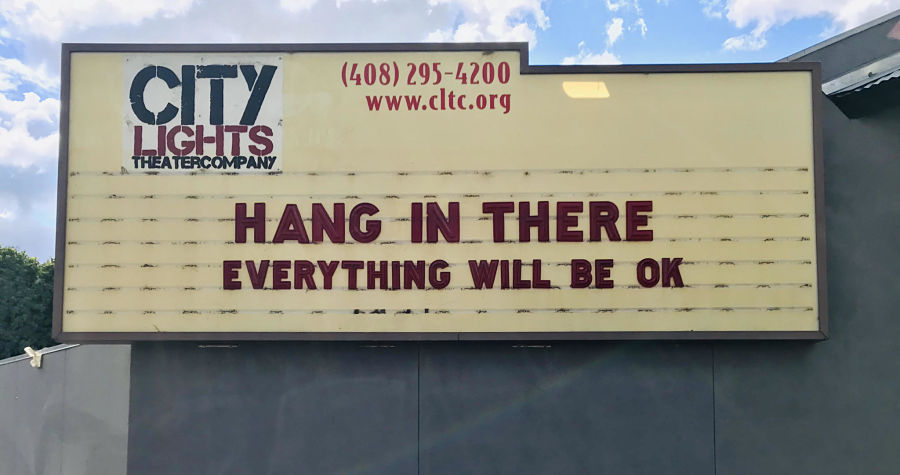We are on the cusp of a new era in American politics and American culture. As we weather the pandemic, the American theatre as an institution has been brought to its knees. As vaccines roll out, the prospect of emerging from the pandemic crisis presents us with the challenge of reshaping the theatre industry from the ground up.
Frightening though this moment may be, it is not without precedent. In the 1930s, at the height of the Depression, theatre artists were faced with similar challenges. Those challenges were met and overcome—not by the companies and artists alone, but with the intervention and support of the national government. The Federal Theatre Project created jobs for millions of actors and directors, founded the Living Newspaper as a tool for building political and cultural literacy, and was startlingly progressive for its time.
We are now just as desperately in need of a program to support the theatre industry’s rebirth. And we have a unique opportunity to create a stronger, more equitable, more diverse theatre—a theatre that reflects the multicultural fabric of this country, and does so in a meaningful way at the local level. With a divided national government more and more likely, and with the National Endowment for the Arts (NEA) remaining a political football, we believe the best hope for a rejuvenation of the theatre is reform at the state level. With state-based funding for the regional theatre system, we could return to a repertory model with full-time employment for actors and serve our local audiences better than a national program ever could. In doing so, we could establish a secure, socially just work environment for the American theatre artists of the 21st century.

For the purposes of this article, the word “repertory” is defined as a model of making theatre in which there is a resident acting company that rehearses during the day and performs a rotating repertoire of shows each night. This is in contrast to “en suite” or line production—putting up shows for a limited run, closing them, and starting a new production—which is the default way of making theatre in America today. The repertory model, we posit, makes the strongest argument for theatre as an art form in the 21st century: It shows off what the theatre does best and can better compete with television and new media by creating original live art with and for a specific community that cannot be found anywhere else.
Appeals for a return to the repertory model have been steady over the last decade. As recently as a few months ago in an article in American Theatre, Jim Warren argued passionately and convincingly for just such a transition. The one thing missing has been the hard data—the actual costs of making the transition to a full repertory production system. We have been gathering and analyzing this data over the last seven years in an effort to create a roadmap for what a state-funded theatre system might look like in America in 2021.
The Status Quo
The problems with our current system of nonprofit theatre production in America are manifold, and were acute long before the pandemic hit:
- Actors are forced to be itinerant and to spend much of their time and energy acquiring work rather than honing their craft. Once the work is acquired it is rarely well-paid and is at most a six- to eight-week contract. This leads to permanent job insecurity, financial instability, and ultimately to burnout and a loss of creative potential.
- Ballooning costs of physical spaces and administrative staff as well as an increasing reliance on a declining audience base have shifted the priority of the organizations away from ingenuity and toward a homogenization of programming.
- A lack of transparency and a patriarchal power structure have prioritized white male voices and leadership while limiting the opportunities for non-white colleagues. This has led to a critical lack of diversity in the art we make and the audiences who watch it.
- The dominance of the New York market incentivizes regional theatres to make work geared toward a New York audience rather than their own. The allure of creating a hit that will transfer to Broadway (and create a revenue stream for years to come) skews the decision-making of artistic leadership away from their own community. This is the exact opposite of Zelda Fichandler’s original vision for the regional theatre system.
The Repertory Solution
The repertory system, in combination with state funding for theatres, would address each one of these serious issues. The repertory model prioritizes the talents and needs of actors, putting them front and center as the protagonists of the theatre company, and by extension of the community it serves. It provides for meaningful employment, with the benefits of paid time off and health insurance, as well as multi-year contracts.

The repertory model is often criticized for not being conducive to diverse programming. An ensemble of only 15 actors, many argue, limits the kinds of plays that can be done. The obvious response to this is: Hire a diverse ensemble. Of course, guest actors will occasionally need to be hired to fill some roles, but these too should be cast from local/regional talent. This would be yet another investment in the community, keeping the focus on local jobs, rather than on shipping in talent from the coasts. This would be necessary anyway, as the shows would be playing in repertory, coming up throughout the month rather than playing in succession.
What’s more, a community-centric repertory model would starkly differentiate the styles of different theatres, as the issues and plays that resonate with a rural audience will naturally differ from those of urban audiences. This diversity of programming would lead to more buy-in from local audiences and would return the theatres to their position of being cultural centers serving their own community, rather than looking toward the coasts.
The State Solution: Benefits and Costs
Ensembles and repertory can create stronger bonds between a theatre and its audiences. Popular titles would have the chance to run for multiple seasons, creating revenue year after year. And by providing theatre artists the job security of a full-time contract, those artists become rooted in their community. This connection translates into more relevant art for that community, as well as more revenue from that community.
Germany, for instance, demonstrates that small ensembles (10-20) working on the repertory model can be had for budgets comparable to those of mid-size and large theatres in the US, according to TCG’s own Theatre Facts publication. The German system has also demonstrated that the actual per capita economic impact of government-funded culture far exceeds the investment. (Multiple studies prove that funding for cultural institutions leads to a big economic return. In 2019, Germany spent $11.4 billion on culture—theatres, opera, museums, symphonies, etc.—and brought in over $107.1 billion in revenue derived from culture.)
Still, it is important to be realistic from the outset, as the transition to a repertory model would be costly. Where, then, would the money come from? If there were millions to be had through donations or private foundations, our development staffs would have found it by now. The American theatre system runs a wide gamut, from storefront theatres to large institutions, and the funding challenges all face are complex. With that in mind, we would like to propose a system of government-based multi-year grants that would go a long way to ensuring that theatres both large and small would have the financial security and organizational capacity to restructure their programming towards a repertory ensemble model.
For the reasons already listed above, we do not expect this type of funding to be made available by the national government. As with so many important programs in the U.S., it must begin at the state level and be proven worthy before being adopted elsewhere. A state-level funding program could improve the quality and relevance of theatre for local audiences, create job security for thousands of artists, improve access to theatre for all state residents, and improve that state’s national and global cultural status. To demonstrate our model, we will use California as an example.
California as a Model for State Theatre Funding
California has a population as diverse as the United States itself. It also has a mixture of urban and rural populations, from mega-cities like Los Angeles to the farm country of the Central Valley. The economic engine of Silicon Valley and California’s impressive GDP ($3.1 trillion in 2019) means it also has the tax revenue to support a cultural funding plan on the scale we are envisioning. If California were to guarantee each county $4.5 million, to be given to two theatre companies in each of its 58 counties, they could create 1,100-3,000 full time jobs for artists in the state while allowing those artists to stay and invest in the communities where they live.
This investment would allow both rural and urban theatres to create the kind of programming their local audiences would most respond to. While it is our hope that this kind of financial security would allow theatres to take new risks, experiment with new forms, and push the boundaries of our theatrical thinking, it is not our intention to dictate each community’s needs. The theatres of Mono County may choose to program only jukebox musicals to serve Yosemite tourists, while San Bernardino theatres might create operas about Route 66. It is our belief that broader access to theatre leads to a more diverse appetite for theatre generally. The point is not to judge which art is more worthy, but rather to give communities the ability to decide for themselves what programming would be most meaningful.
We propose that the state give each county $4.5 million directly, on the condition that they set up a program to distribute the funds to two qualified resident theatres. There could be instructions for these funds:
- The county must appoint or elect a cultural supervisor. This supervisor would be tasked with assembling a jury of artists and organizers from around the county.
- The jury would invite proposals from county theatres which would need to address who their audience is, how they intend to reach new audiences, or engage their audiences in a different way, how they intend to build their ensemble, perhaps even their rough season plans and how those seasons challenge and grow their ensemble and their audiences.
- The funds would be paid for five years—for $10 million in total—with the chance to reapply for another five years. At the end of the 10-year funding period, each theatre would only be eligible for another round of funding if they replace the artistic director, or wait another five years. This would encourage artistic leadership to rotate, making room for new perspectives and keeping the theatre’s vision from getting stale.
Though urban counties would receive funding under this scheme, this subsidy plan is clearly meant to emphasize and support rural and suburban communities. But rather than touring shows developed in and for an urban setting to rural communities, the state-funded model would allow those theatres to decide for themselves what programming is best for their local audience. And because the funding would be available at the county level, theatres would only be in competition with their immediate neighbors, rather than with big-budget city institutions.
Under this model, 116 theatres could receive state funding in perpetuity, as long as their leadership changed often enough. But this money would affect different communities in different ways. Urban theatre scenes have fiercer competition and larger theatres (as well as access to other funding sources, both private and governmental). Under this model, the most realistic outcome is that large theatres in urban settings would be become larger. This isn’t necessarily a bad thing, as they are the theatres best equipped to creating a robust and vibrant ensemble repertory system.
Outside the cities, however, we are more likely talking about making small theatres into mid-size theatres. And while the possibility that they may lose this source of funding would therefore be more life-threatening, the twice-a-decade pressure to come up with innovative solutions for reaching new audiences or taking new artistic risks should lead to all sorts of exciting collaborations in places that do not often have the leeway to make such choices.
In reality, we acknowledge that California has made great strides recently to improve working conditions for artists. After the rocky rollout of AB5, which mandates that all freelancers in the state are entitled to minimum wage and benefits, the California senate recently introduced SB805, which would provide payroll services for theatres with budgets smaller than $1.4 million, and offer grants to some of these theatres to support paying artists these wages. If it were to pass, it would be a wonderful step in the right direction, and would cover many of the theatres that do not receive funding under our proposal.
But our proposal would not just guarantee wages and benefits: It is designed to created and safeguard long-term job security and the ability to pick one’s own community, while expanding access to the arts. Including administrative costs, we estimate that this program would cost California about $290 million annually. While not an insubstantial amount of money, this investment would also be offset in part by revenue generated from gas, dining out, childcare, and similar sources which often accompany theatre ticket purchases. This effect is well documented: The economic impact of live performance on the local economy is enormous. The California Arts Council‘s current budget is around $57 million for all programs (not just theatres), and this money has mostly been directed toward grants for organizations creating work in rural communities, schools, and prisons.
While our proposal is clearly in line with the state’s goals, of increasing access to the arts for rural communities and young people while simultaneously improving working conditions for artists, it admittedly does call for an enormous increase in arts spending in the state. But California, the world’s fifth largest economy, should be able to manage more than its current budget; the world’s fourth largest economy, Germany, spends 11.4 billion euros (around $13.6 billion) on cultural funding annually, between federal and state programs. Not only California, but all of America needs a system of arts funding it can be proud of and that will have a meaningful economic impact on its cultural institutions.
And while the economic impact would be important, the personal impact on the lives of the artists under this proposal cannot be underestimated. In this system, it’s not difficult to imagine a young actor who finds city life disagreeable, or just can’t afford to live in New York City or Los Angeles right now. She wants to act; it’s what she was trained to do. She gets a job in the ensemble in Redding, Calif., stays there for a few years, moves with the artistic director to her hometown of Davis, where she performs for another few years. Maybe she hops down to L.A. in the summers to make a movie. Eventually one movie hits big and she chooses to leave the ensemble and do film and freelance theatre, coming in as a guest performer every so often.
This begins to resemble an actual career path, a plausible journey an actor could undertake in order to make a living in the theatre. It would not be long before every actor we see on screen came up through California’s theatre system, and every county has a hometown hero. Just as the repertory system in England of the last century gave us such greats as Patrick Stewart, Judi Dench, and Ian McKellen, an American state repertory system could be a model for best practices and a pipeline for proven, versatile actors who have honed their craft while making a dignified living as a performer.
The existence of successful American repertory companies like the Barter Theater in Virginia, the Hedgerow Theatre in Pennsylvania, or the nation’s many summer stock companies are a testament to the repertory model. And if other states decide they want to create a similar system to rejuvenate the American theatre, employ more artists, and better serve their communities, we might just start to see the beginning of a movement.
The pandemic has taken so much from the American theatre, but it has also given us a rare gift: the chance to transform it. We have been able to peek behind the curtain and see how our systems work and judge whether they live up to our values. The current en suite system funded by ticket sales and donors prioritizes institutional survival and the salaries of administrators over the ideals that built the institutions in the first place: professional theatre designed to serve a regional audience and support regional artists. With state-supported funding and a renewed commitment to the repertory system, we can ensure that theatres survive while simultaneously helping them get back to their founding ideals, and guarantee the long-term success of our artists and our art form.
Brian Bell (he/him) is an American theatre director and writer based in Berlin.
Sam Hunter (he/him) is an American theatremaker, founding member of Hungry River Theater Company in Ridgecrest, Calif., and the current artistic director of the West in Los Angeles.


